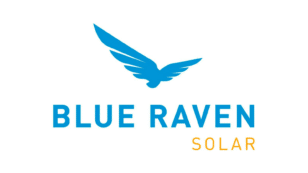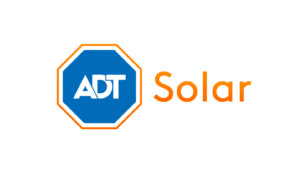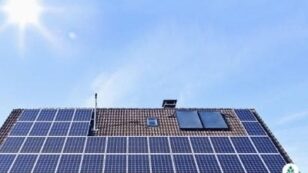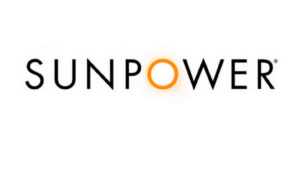
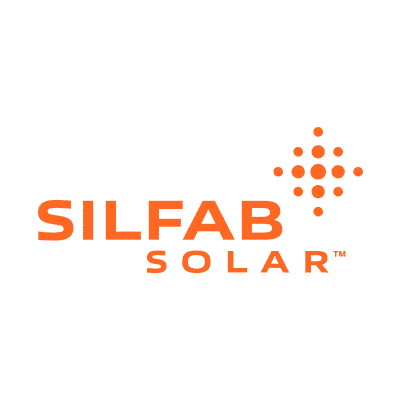
Silfab Solar Panels Review (2024 Cost, Efficiency & Performance)
Here’s what you need to know about Silfab Solar:
- EcoWatch Rating: 4.5 Stars
- Efficiency: 20.2% to 21.4%
- Power Rating: 370 to 380 W
- Warranty Length: 25 to 30 Years
Each product and or company featured here has been independently selected by the writer. You can learn more about our review methodology here. If you make a purchase using the links included, we may earn commission.
Silfab is one of the few major solar panel manufacturers that is based in North America, with headquarters and operating offices in Toronto and Ontario in Canada and in Bellingham and Burlington in Washington State. It’s considered a tier-one brand of panels, and its products boast above-average efficiency ratings and impressive performance specifications. We consider Silfab to be one of the best solar panel brands for homes in the United States.
In this Silfab solar review, we’ll take a look at what sets this North American company’s products apart from the competition, how much the panels cost, their overall quality and durability and more. The information below should help you decide if Silfab panels are the best option for your solar project.

Silfab

Average cost
Pros
- Best-in-class warranty coverage
- Long-lasting panels
Cons
- Slightly less efficient than top competitors
- Less availability
Does Silfab Make Good Solar Panels?
Yes, Silfab makes outstanding solar modules that have high efficiency ratings and above-average sustainability, being manufactured entirely in the U.S. and Canada and being supported by a great panel recycling program. Silfab panels are a little on the expensive side, but we feel that the quality you get is well worth the investment.
We should also mention that Silfab panels have some of the best resistance to intense winds, with an industry-leading max wind load of 5,400 Pascals (Pa). That makes them an ideal option in areas that see intense winds from hurricanes, tropical storms and other intense weather.
We’ll discuss some of the specifications and specific perks of the four panel options Silfab manufactures for home solar systems in the following sections.
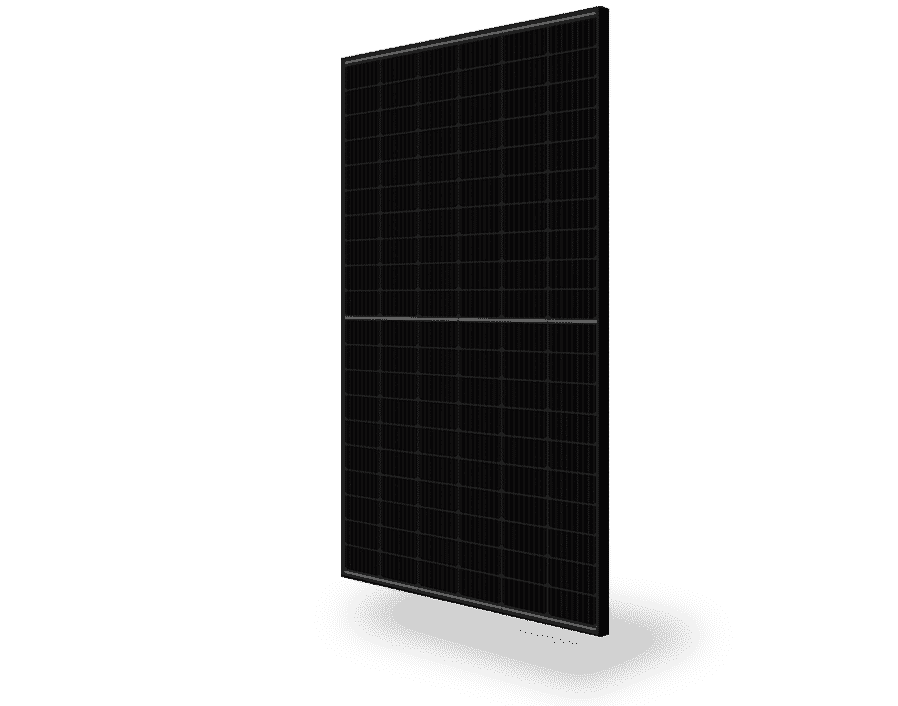
Silfab Prime SIL-370 HC Solar Panels
The Prime series from Silfab is the primary lineup of panels. They have a slightly lower price per watt than the more capable Elite product line, but they also deliver lower efficiency ratings. Still, the SIL-370 HC panels have an efficiency rating of 20.2%, which is still well above the industry average.
These panels are all black and have no visible grid lines, which most customers prefer. They are quite sleek, and they’re the smallest of Silfab’s panels, making them the most suitable for smaller roofs.
Silfab Prime SIL-400 HC+ Solar Panels
The SIL-400 HC+ panels have an identical efficiency rating to the previous model — 20.2% — a similar positive-only power rating and outstanding resistance to both wind and snow loads. They are a bit larger in wattage and physical dimensions, so they’re not as likely to fit smaller roofs as the 370 HC panels.
These panels, along with the other entry in the Prime series, feature 9-busbar technology, which helps maximize efficiency and reduce losses from the connections between solar cells. These panels are also all black and have no visible grid lines.
Silfab Elite SIL-380 BK Solar Panels
The Silfab SIL-380 BK panels are the smallest option in the company’s more-powerful Elite Series. They have an above-average efficiency rating of 21.4% and a positive-only power rating of -0%/+10%, which makes them super capable and a great option for homeowners looking for above-average production capabilities, especially if they also have smaller roofs.
These panels sport back-contact passivated emitter and rear cell (PERC) solar cells. These are monocrystalline panels, so they have an above-average durability and lifespan. The back contact technology reduces shading on the energy-producing side of your panels, which helps maximize production and reduce losses when the sun isn’t at its peak height in the sky.
Silfab Elite SIL-410 BG Solar Panels
The SIL-410 BG panels are a bit larger and more capable than the other entry in the Elite Series. These monocrystalline panels have a power output of 410 watts and maintain the above-average efficiency rating of 21.4%, as well as the positive-only power rating in the previous model.
These panels are similar to the SIL-380 BK panels, although they are larger in size and output. That means they’re a bit less optimal for homeowners with smaller roofs.
What Technology Does Silfab Use In Its Solar Panels?
Silfab has made some minor innovations in the photovoltaic (PV) panel industry, but the majority of the technology the company uses in its panels today is also used by other providers. We’ll discuss some of the tech Silfab includes in its products in the following sections.
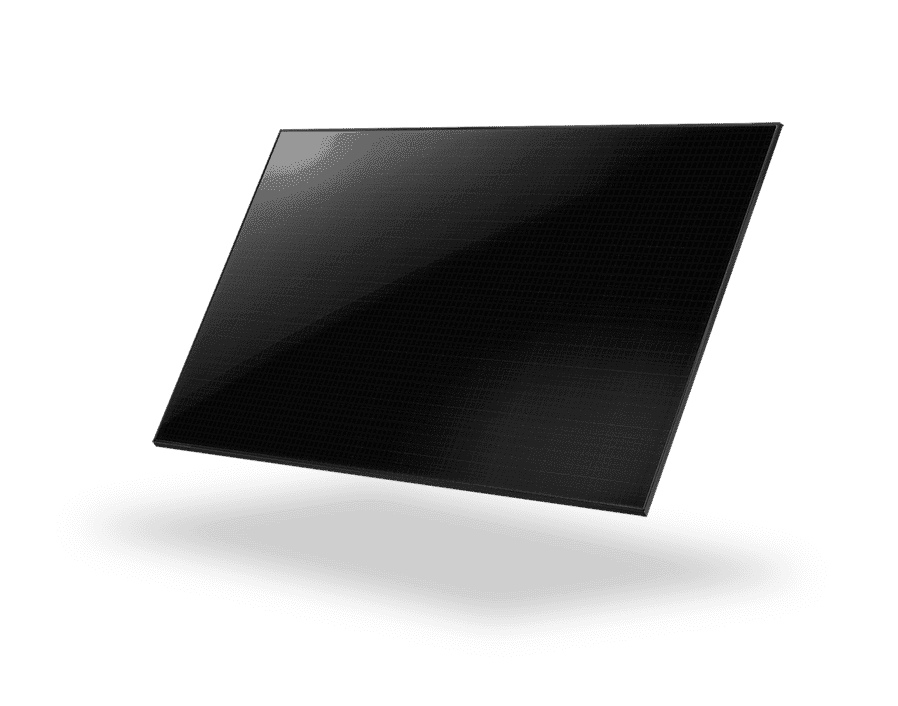
9-Busbar Technology
Busbars are the components in solar panels that conduct electricity across the solar cells inside. Generally speaking, the more busbars there are, the lower the resistance inside the cell, and the more power the cell is able to produce and convert to usable electricity. The estimate for the increase in power production in a 9-busbar panel over a 5-busbar panel is around 25%.
All of Silfab’s panels use 9-busbar (9BB) technology. To be clear, this tech is not exclusive to Silfab’s panels and is used by most tier-one manufacturers, including direct competitors like REC and QCells.
Half-Cut Solar Cells
Half-cut solar cells are another common piece of technology used in tier-one panels, including those manufactured by most of Silfab’s direct competitors.
Half-cut cells are smaller than standard cells, which means more cells can be fit into a single panel. More cells means more energy production capabilities, which, again, boosts the panel efficiency. Panels with half-cut cells also typically have two independently-functioning halves, which improves power production in partially shaded areas.
PERC Cells
Passivated emitter and rear contact (PERC) monocrystalline cells are some of the most advanced solar cells used by many of the tier-one panel manufacturers, including industry leaders like Maxeon. Once again, this tech doesn’t necessarily set Silfab apart from the competition, but it does make it one of the nation’s top competitors in the solar industry.
PERC cells offer two advantages over traditional cells. First, they can recapture solar energy that would otherwise escape through the back of the panel, which helps boost energy production. Additionally, the location of the contacts on the back sheet of the panels reduces how much energy gets blocked at the front, which helps make the best use of the available sunlight.
How Do Silfab Solar Panels Perform in Different Climates?
Silfab panels perform best in cold and moderate climates, and while they’re better than average in hotter climates, they lose more efficiency in hotter temperatures than many of the panels from direct competitors.
First, it’s worth mentioning that all solar panels perform better in the cold because electricity moves more quickly in colder temperatures, and it’s easier to get sufficient voltage differentials from electrons at rest at colder temperatures when struck by solar rays. This is also true of Silfab panels, and since they have above-average efficiency ratings, they’ll perform better than most panels in colder climates.
In hotter climates, it’s important to consider the temperature coefficient of a panel, which tells you how much of the original efficiency a panel loses per degree the temperature rises above 77 degrees (F). All panels lose efficiency as the temperature goes up, and the temperature coefficient tells you how much.
Silfab panels have an average temperature coefficient of -0.39%/degree (F), which means every degree above 77 (F) the temperature of the panel rises — not ambient temperature, as panels are significantly hotter than ambient temperature due to solar energy collection — 0.39% of the panel’s efficiency will be lost.
This temperature coefficient is a bit on the high side, which means the panels aren’t the best option in hotter climates. For comparison, the average temperature coefficient among tier-one panels is around -0.35%, and the industry leaders in this area — Maxeon and Panasonic — have coefficients of -0.27% or lower.
To be clear, Silfab panels will still work well in hot climates and deliver above-average performance. However, compared to other tier-one panels, they will lose slightly more power as the temperature increases.
Does Silfab Make Any Other Solar Products?
Silfab currently only manufactures panels. This is standard among most of the tier-one panel manufacturers, although there are exceptions, like SunPower, which manufactures panels — through its sister company, Maxeon — and solar batteries.
How Much Do Silfab Solar Panels Cost?
The average cost of Silfab panels is around $3.67 per watt, which is above the national average of $3.33 per watt. The $3.67 per watt price is about average when it comes to direct competitors in the tier-one panel space, though, especially when looking at panels with 21% efficiency or higher.
It’s worth noting that some of the closest competitors in terms of efficiency, including Canadian Solar and QCells, are around the same price, although QCells panels are slightly more affordable.
With the average system size requirement of 9 kilowatts (kW) in the U.S., that puts the average total system cost using Silfab panels at $33,030 before any incentives or $23,121 after the federal investment tax credit is considered.
This average system size is based on the average monthly energy consumption of 881 kilowatt-hours (kWh). If you consume more power per month, your system size and price will be higher, and the inverse is also true. The price per watt for Silfab panels can also fluctuate slightly based on your location.
Silfab Financing Options
Silfab doesn’t sell its products directly to consumers, so it doesn’t offer any financing options. Instead, you’ll need to choose a solar installer in your area that installs Silfab panels and choose a payment option through that company.
There are four primary options you can choose to pay for your solar array, although not all of them are offered by all installers. The options include cash payments, solar loans, solar leases and power purchase agreements (PPAs).
Cash is the best option overall, although it’s the least accessible because of the high upfront cost. Paying in cash gives you the highest solar savings over time and the fastest panel payback period. Plus, it gives you access to the federal investment tax credit, which is one of the best solar incentives available in the country.
A loan also gives you access to the federal credit and leads to panel ownership, which means that, along with cash purchases, loans will boost your home value. Loans will require that you pay interest on the system total, which extends the payback period and decreases your savings by an average of around $5,000. However, there are often no down payments required for solar equipment loans.
A lease is a rental agreement for your panels, so you’ll never own them. You’ll see an average savings of around $5,000 with a lease, but this pales in comparison to the tens of thousands of dollars you could see if you pay with cash or a loan. Leases don’t give you access to the federal credit and don’t improve your home value, but they are highly accessible.
A PPA is another very accessible option, thanks to the lack of a down payment and the low ongoing costs. However, you won’t ever own your panels, which means savings are limited — an average of around $4,000 — and you can’t take the federal solar tax credit.
How Can You Save Money on Silfab Solar Panels?
Since Silfab panels are above average when it comes to the cost per watt, most solar customers installing them look for ways to save money on the equipment and labor. There are a few things you can do to keep your installation costs down. We’ll explain some money-saving strategies you can use for Silfab panels in the following sections.
Opt for the Prime Series from Silfab
Silfab has two series of solar panels available for residential solar arrays: Prime and Elite. The Prime series has a lower cost per watt than the Elite series due to less impressive performance specifications, including a lower efficiency rating of 20.2% as opposed to the Elite’s 21.4% rating.
You can likely save a few hundred dollars on your system by choosing the Prime panels from Silfab over the Elite series. However, it’s important to keep in mind that your savings will only be seen upfront on the installation costs.
The Prime panels’ lower efficiency rating will mean a lower rate of energy production, which could eat into your long-term energy savings. You’ll have to decide if you’d prefer to optimize for upfront costs or long-term savings while keeping in mind how your local net metering policy will affect your savings over time.
Take Advantage of Solar Incentives
Solar incentives are usually the best way to save money on your Silfab solar system. All taxpayers in the U.S. can take the federal solar tax credit, which averages around $8,891 in potential effective savings. Given the above-average cost of Silfab panels, the credit is around $918 higher for Silfab panels than it will be for other brands.
There might be additional solar incentives available in your state or from your local municipality or utility company. We recommend checking the Database of State Incentives for Renewables and Efficiency (DSIRE) for more information on which incentives and solar rebates are available in your area.
Overall, solar incentives can likely save you over $10,000 on your Silfab panels, depending on where you live.
Get Multiple Quotes
Finally, since SIlfab doesn’t sell panels directly to consumers, the actual price you pay for Silfab solar equipment will depend, in part, on the installer you choose to handle your solar project.
Installers can mark up Silfab panels, which means you might pay above the average of $3.33 per watt for them, while others might discount them to get your business. Additionally, installers all charge different amounts for the labor that goes into the installation, which can account for differences in the thousands of dollars in the total price.
We suggest you get a few quotes from installers in your area that carry and install Silfab panels and choose the best option that fits into your budget.
Does Silfab Offer a Good Solar Panel Warranty?
Most solar panel manufacturers include an equipment warranty that covers manufacturer defects and related damages, as well as a performance warranty that guarantees a minimum level of production for your panels. Silfab offers both of these, and the production warranty is one of the longest in the industry.
The equipment warranty from Silfab is standard, as it covers the typical defects and lasts for 25 years. This 25-year warranty is average in the American market.
The efficiency warranty, however, lasts for 30 years, which is about 50% longer than the industry standard of 20 years.
It’s important when assessing production warranties to consider the performance guaranteed to remain at the end of the warranty term, though, and Silfab’s coverage is below average in this regard.
Silfab guarantees that your panels will lose no more than 2.9% of their starting efficiency in the first year after installation. This is more than most direct competitors, who ensure a loss of no more than 2.5%, and it’s not even close to the industry leader, Trina, with 1%.
In subsequent years over the warranty term, Silfab guarantees a loss of no more than 0.5%, which again is above the average among its competitors of 0.4%. Over the first 25 years, Silfab panels will retain around 85.1% of their starting efficiency, while most competitors will retain 87.9%.
Generally speaking, Silfab panels will last for between 25 and 35 years, which is excellent and should leave you plenty of time to enjoy net savings on your electric bills.
How to Get Silfab Solar Panels Installed
The process of getting Silfab PV modules installed on your home is similar to what you’d expect from most other major manufacturers. Silfab is a popular brand, so it’s available from many installation companies. Below is a quick breakdown of the process from start to finish once you find a local installer that carries Silfab panels.
- Step 1 — Request a quote: Your first step will be to reach out to installers in your area and request estimates for your solar panel system. Most installers will get back to you within a day or two to gather additional information.
- Step 2 — Consultation and property inspection: Next, your installer will request a copy of your most recent electric bill and schedule an inspection. You’ll need to be home for inspection, as it usually requires interior access. The majority of the assessment will take place on your roof, though.
- Step 3 — Contract approval: After the inspection, you’ll get a formal solar quote for your system. This includes all of the information you need about your system cost, expected power output and installation timeline. It should also detail any additional duties your installer will perform, like filing for permits, incentives and interconnection.
- Step 4 — Permitting and planning: Once you sign the contract, your solar installer will begin pulling permits for the installation and ordering the Silfab panels that will be installed on your roof.
- Step 5 — Installation: After permits are approved and the equipment is delivered, the installation team will schedule your installation. This usually takes an entire day, and you’ll need to be home for the entire process to grant interior access to your breaker box.
- Step 6 — Inspections and interconnection: Once the installation is completed, your installer will schedule any necessary inspections to close out your permits and get your system interconnected and activated.
- Step 7 — Solar monitoring: After the system is active, your installer might set you up with a solar monitoring app to keep track of your production, your home consumption and your system health. Silfab doesn’t offer its own solar monitoring app, so your access to monitoring software will depend on the other products you have installed. Some common options are the Enphase app and the Tesla app, which are included with Enphase inverters and Powerwalls, respectively. Both function with Silfab panels.
The table below provides a side-by-side look at some of the best solar installers that are known to work with Silfab panels. Keep in mind that availability may vary based on where you live.
| Momentum Solar | ADT Solar (in select areas) | Green Power Energy | |
| Year Founded | 2009 | 2008 | 2009 |
| Areas Served | 11 States | 31 States | 4 States |
| Better Business Bureau (BBB) Rating | A+ | A+ | A+ |
| Services Offered | Solar panel and battery installations | Solar panel and battery installations | Solar panel, battery and EV charger installations |
| Payment Options | Cash, solar loans, leases and PPAs | Cash and solar loans | Cash, solar loans and solar leases |
| Relative Cost ($-$$$$$) | $$$ | $$$ | $$$ |
| Workmanship Warranty Offered | 25 years | 25 years | 25 years |
| Overall Rating (Click for Review) | 4.5/5 | 4/5 | 4.5/5 |
You can use the tool below to find a Silfab installer in your area if the companies above don’t cover your location.
What Are Customer Saying About Silfab Solar Panels?
It’s very challenging to assess reviews of the Silfab panels, in particular, as nearly every customer review is left for the installer and not the manufacturer. With that being said, we’ve read through dozens of reviews of companies that carry Silfab products and have found that the majority of customers are pleased with their performance, durability and longevity.
We’ll provide some insight into the general consensus for Silfab panels in the following sections.
Positive Reviews of Silfab Solar Panels
Most of the reviews we’ve parsed for installers that carry Silfab panels speak positively about the panels themselves. Many mention that the overall performance is excellent and that the energy savings are in line with or above what they expected.
There are also some comments about how sleek the panels look, which is likely due to the all-black panel face with no visible grid lines, a popular design for panels in the U.S.
There are positive comments about the warranty coverage as well, although it’s unclear if these refer to the manufacturer’s warranty coverage or what was provided by the installer.
Negative Reviews of Silfab Solar Panels
There isn’t much in the way of negative comments about Silfab solar modules, specifically, although there are plenty of negative reviews for the installers that carry them. Thankfully, most don’t cite the panels themselves as the underlying issue as to what caused the customers’ discontent.
There are some comments about panels failing after installation, but these don’t appear any more frequently for Silfab panels than they do for Silfab’s tier-one competitors. Additionally, it’s unclear if the problems stemmed from manufacturer defects or from improper installation, the latter of which would not reflect poorly on Silfab.
Overall, Silfab has a good reputation for premium quality solar panels in the U.S.A.
Silfab vs Other Solar Panel Manufacturers
Silfab makes our list of the best solar panels for use on homes in the U.S. The panels have an above-average efficiency rating and great performance specifications, and while they’re not the most powerful, they should provide plenty of energy production for most customers to see substantial energy savings over time.
Silfab modules degrade a bit more quickly than panels from direct competitors, so you’re likely to see more utility bill savings from other tier-one panels with similar starting efficiency ratings. Silfab panels also lose more efficiency than most competing panels in higher temperatures, so they’re not our top pick for hot climates.
With that being said, Silfab panels have excellent durability, great warranty coverage and some of the best wind and snow load resistance in the industry. We’d specifically recommend these panels in areas that see extreme weather like hurricanes and tropical storms, as the wind load resistance is 5,400 Pa, almost double what most competing panels offer — 3,000 Pa. They’ll stand up better to heavy winds, reducing the risk of panel and property damage.
Our top pick for panels in the U.S. is Maxeon, as these panels have better performance specifications, the highest efficiency ratings available and even better warranty coverage than Silfab panels. However, they are around $0.33 more expensive per watt than Silfab panels.
The table below provides a quick look at how Silfab products stack up against direct competitors.
| Silfab | SunPower | QCells | REC | Panasonic | |
| Max Efficiency Rating | 21.4% | 22.8% | 21.4% | 22.3% | 22.2% |
| Power Tolerance | -0%/+10% | -0%/+5% | -0%/+5% | -0%/+5% | -3%/+3% |
| Temperature Coefficient | -0.39% | -0.27% | -0.39% | -0.32% | -0.26% |
| Degradation Per Year (After 1st Year) | 0.5% | 0.25% | 0.45% | 0.5% | 0.26% |
| Equipment Warranty Term | 25 years | 40 years | 25 years | 20 years | 25 years |
| Efficiency Warranty Term | 30 years | 40 years | 25 years | 25 years | 25 years |
| Average Price Per Watt | $3.67 | $4.00 | $3.47 | $3.67 | $3.90 |
| Panel Manufacturer Review | – | Read Our SunPower Panel Review | – | Read Our REC Panel Review | – |
Bottom Line: Would We Put Silfab Solar Panels On Our Roof?
Yes, we would feel comfortable installing Silfab solar panels on our own roofs, especially if we lived in an area that frequently saw extreme wind.
Silfab panels have above-average efficiency ratings to provide greater energy bill savings over time and good performance specifications overall. The most impressive spec, though, is the wind load resistance, which is nearly double the industry average. Silfab panels are a little more expensive than the average but are right in line with what high-efficiency competitors cost.
Our top pick would be Maxeon panels, which are the most efficient in the industry and have some of the most impressive warranty coverage, but they are about 10% more expensive than Silfab panels.
No matter which manufacturer you choose, we recommend you get a few different quotes for your system to compare prices and system functionality. You can use the tool below to get estimates from the best solar companies in your area for quick comparison.
Methodology: How We Reviewed Silfab Solar Panels
When we review solar panels, we look at all of the factors that determine how beneficial a specific brand is going to be for your home and your energy savings. We look at six main criteria that help us determine the performance, quality, efficiency over time and longevity. We’ll discuss these factors below to give you a better idea of how our rating system works.
- Panel Efficiency (25%): The efficiency rating of a panel tells you how effective your system is going to be at converting the available solar energy into usable electricity for your home. The higher the efficiency rating, the more power you’ll get per panel and per square foot. Panel efficiency is always a crucial factor, but it’s especially important for homeowners in areas with minimal sunlight or with particularly small roofs. Silfab panels have an above-average efficiency rating of 21.4%, so they will deliver more energy to your home than most other panel brands for similarly sized systems.
- Panel Durability (20%): The durability of a panel is another super important metric, both in terms of its degradation rate and how well it stands up to extreme weather. As such, we look at how much efficiency is lost in the first year and subsequent years after installation, as well as the wind and snow loads. Silfab underperforms compared to direct high-end competitors when it comes to efficiency loss over time, as it has an above-average loss of 2.9% efficiency in the first year and 0.5% in subsequent years. However, it has average resistance to snow and one of the best resistances to extreme winds, so it’s an excellent option in areas that see hurricanes and tropical storms.
- Warranty Coverage (20%): Solar panels are expensive, so it’s important to make sure yours come with robust warranty coverage. This will help avoid issues with your panels that can cut into your savings and cause headaches with repairs and replacements. Silfab’s equipment warranty lasts for the standard 25 years. Its production guarantee lasts for 30 years, a full decade beyond the industry average. While the length is outstanding, the degradation rate within that timeframe is still above average, which isn’t ideal.
- Cost (20%): High-end solar panels are all going to sit above the industry average in terms of cost per watt, but we look at how far above that average each brand is, as well as the quality you get for the price. Silfab panels are higher than average at around $3.67 per watt, but we do feel the quality you get is well worth the investment. Still, we’d sooner recommend other brands with better specifications at the same price point, like REC and QCells.
- Temperature Coefficient (10%): The temperature coefficient of a panel tells you how much power the panel will lose as the temperature rises above 77 degrees (F). Panels with a higher temperature coefficient will be less valuable in hotter climates. Unfortunately, Silfab panels have an above-average temperature coefficient of 0.39%, which means they’re better suited for colder or moderate climates and won’t be as beneficial in hotter temperatures as most direct competitors.
- Sustainability and Appearance (5%): Finally, we look at the sustainability of the manufacturer — specifically if the panels are manufactured in the U.S. and are backed by an end-of-life recycling program — and the appearance of the panels. Silfab does have a panel recycling program to boost overall sustainability, and it’s one of the only solar manufacturers that entirely produces panels in North America. All of its panels are also all black and lack visible grid lines, which most customers prefer for a sleek and modern appearance. As such, Silfab sits ahead of the competition in this area.
The cost information presented in this article is derived from a comprehensive analysis, incorporating data from multiple industry sources. The average cost per watt per state was calculated based on figures from Consumer Affairs, Energy Sage, and Berkeley Lab’s Electricity Markets & Policy Department. Additionally, monthly energy consumption and the average monthly cost of electricity were sourced from the U.S. Energy Information Administration, ensuring a well-rounded and accurate representation of the information presented.
FAQs: Silfab Reviews
Since Silfab is one of the more popular solar panel manufacturers in the industry, we get a lot of questions about the company and its products. We’ll answer some of the most common questions we see below.
Yes, Silfab is a tier-one panel manufacturer in the solar power industry, and its panels have a lot going for them, including above-average efficiency ratings, above-average warranty coverage and the fact that they’re manufactured entirely in the United States. Silfab panels are a little on the expensive side, but the quality and durability make them one of the best panels for home solar systems overall. The company also has a solid track record of making high-quality panels, with over 13 years of experience in the industry.
No, Silfab Solar Inc. is based entirely in North America, and its manufacturing process takes place entirely in manufacturing facilities in the U.S. and Canada. It’s uncommon for a solar manufacturer not to take advantage of the lower production costs in China and other Asian tech powerhouses, making Silfab one of the best panel brands to choose if you want to support a more sustainable product that’s manufactured right here in North America.
Silfab does not provide solar quotes, as it is a panel manufacturer and not an installer. You’ll need to contact a local installation company that carries Silfab panels if you know you want this brand installed. It can take anywhere from a few days to a week or two to get a quote that includes Silfab panels, depending on the installer you choose to handle your solar project.

 233k
233k  41k
41k  Subscribe
Subscribe 





